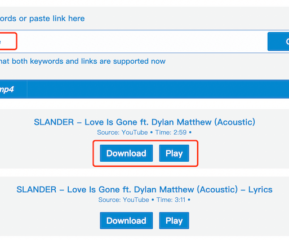ChatGPT, a revolutionary AI language model developed by OpenAI, stands as a pioneer in natural language processing. Its capabilities transcend mere text generation, offering an impressive ability to comprehend, create, and respond in a manner closely resembling human conversation. This AI tool has found widespread usage across various domains, from aiding businesses in customer service to assisting writers, educators, and researchers in generating content and conducting experiments.
As ChatGPT continues to evolve and integrate into everyday interactions, ensuring its safe usage becomes a pivotal point of scrutiny and responsibility. This blog looks into these crucial safety concerns surrounding AI-powered platforms like ChatGPT, exploring both the safeguards in place and the challenges that lie ahead in harnessing the potential of this technology without compromising on safety.
Table of Contents
What is Chatgpt?
ChatGPT is an AI language model designed to understand and generate human-like text based on the input it receives. It’s part of a family of models developed by OpenAI called the Generative Pre-trained Transformers (GPT), specifically trained to engage in conversations, answer questions, generate text, and assist with various tasks. It learns from vast amounts of text data to understand context, generate coherent responses, and provide information across different topics.
What are some key functions of ChatGPT?
ChatGPT operates through a process known as natural language processing (NLP). It’s trained on extensive datasets of text from various sources, learning patterns, context, and language structures. When you input a query or a prompt, ChatGPT uses this learned knowledge to generate a response that is contextually relevant and, ideally, coherent to human understanding.
Its functioning relies on a transformer architecture, which allows it to understand the relationships between words and phrases in a sentence. This architecture enables it to generate text by predicting the most probable next word or sequence of words based on the patterns it learned during training.
ChatGPT’s role in generating human-like text is based on its ability to understand context, maintain coherence, and produce responses that align with the given input. This involves not just understanding individual words but also grasping the overall meaning of the text.
Its applications span various industries:
Customer Service
ChatGPT is used in chatbots for customer support to provide instant responses and assistance.
Content Creation
Writers and content creators use it to generate ideas, improve writing, and brainstorm content.
Education
It assists in creating educational content, providing explanations, and answering questions for students.
Healthcare
In healthcare, it aids in information dissemination, answering FAQs, and even assisting with preliminary diagnostics.
Finance
It helps with customer queries, financial advice, and market analysis by processing large volumes of financial data.
Gaming
Used to create non-player characters (NPCs) that interact with players in video games, enhancing the gaming experience.
Research
Researchers leverage ChatGPT for information retrieval, summarization, and generating hypotheses.
Language Translation
It contributes to machine translation systems, helping bridge language barriers.
Safety Concerns with ChatGPT
Inappropriate Content
There’s a risk of ChatGPT generating inappropriate, offensive, or harmful content. Despite robust filtering systems, AI models may inadvertently produce responses that contain offensive language, misinformation, or sensitive material.
Privacy Issues
Sharing personal or sensitive information with ChatGPT poses a privacy risk. Although the AI itself doesn’t store conversations, any data shared or logged by the platform or service provider could potentially be accessed or misused.
Misuse and Manipulation
ChatGPT can be manipulated to generate misleading information or be used for malicious purposes like spreading misinformation, impersonation, or phishing attempts.
Bias and Fairness
AI models like ChatGPT might reflect biases present in the data they were trained on, leading to biased or unfair outputs in terms of gender, race, or other attributes.
Lack of Context Understanding
ChatGPT might struggle to understand context, leading to responses that are factually incorrect or insensitive, especially in complex or nuanced conversations.
Overreliance on AI Suggestions
Users may overly rely on ChatGPT’s responses without critical evaluation, potentially leading to misinformation being perpetuated.
Safety Features of Chatgpt
These safety measures and ethical guidelines aim to promote responsible usage of ChatGPT while prioritizing user safety, mitigating potential risks, and fostering a more positive and secure environment for its deployment in various applications.
The developers of ChatGPT have implemented several safety measures to ensure responsible usage and mitigate potential risks associated with its deployment.
Content Moderation and Filtering
ChatGPT comes equipped with filters and moderation tools to prevent the generation of harmful, inappropriate, or sensitive content. These filters are designed to recognize and restrict the generation of content that includes profanity, hate speech, explicit material, or other forms of harmful language. Continual improvements are made to these filters through ongoing training and updates based on user feedback.
Usage Guidelines and Ethical Standards
OpenAI, the organization behind ChatGPT, has established ethical guidelines and principles for its usage. These guidelines prioritize user safety, privacy, and the responsible application of the technology. They encourage users to employ ChatGPT in ways that comply with legal and ethical standards, promoting respectful and beneficial interactions.
User Controls and Safeguards
OpenAI provides tools and controls for users and developers to manage and moderate the output of ChatGPT. These include options to filter out specific types of content, adjust the model’s behavior, and implement additional layers of content moderation based on individual needs and preferences.
Continuous Monitoring and Improvement
Developers actively monitor the usage and outputs of ChatGPT to identify potential safety issues or instances where the model generates problematic content. This ongoing monitoring allows for prompt adjustments, updates, and improvements to enhance the model’s safety features.
Collaboration with Researchers and Experts
OpenAI collaborates with researchers, ethicists, and experts in AI ethics and safety to continually improve the safety measures implemented in ChatGPT. This collaboration involves seeking insights, feedback, and guidance from diverse perspectives to ensure a well-rounded approach to safety and ethical considerations.
Tips for Safe Chatgpt Usage
Understand the Capabilities
Be aware of what ChatGPT can and cannot do. While it’s impressive in generating human-like text, it’s essential to remember that it’s an AI and may not always provide accurate or complete information.
Avoid Sharing Sensitive Information
Refrain from sharing personal, sensitive, or confidential information with ChatGPT. This includes details like passwords, financial information, addresses, or any other private data.
Monitor Interactions
Stay vigilant during interactions and monitor the conversation. If ChatGPT generates inappropriate or concerning content, disengage from the conversation and report it to the platform or service provider.
Use Filters and Controls
Take advantage of available filters and controls provided by platforms using ChatGPT. These settings can help in moderating the content generated and restrict inappropriate responses.
Guide the Conversation
Provide clear and specific prompts to guide the conversation in the direction you desire. This can help in obtaining relevant and useful responses while minimizing the chances of undesirable content.
Educate Others
If integrating ChatGPT in a community or service, educate users about responsible usage and potential risks. Encourage them to follow safety guidelines and report any concerning interactions.
Report and Provide Feedback
If you encounter any misuse, inappropriate content, or potential safety issues while using ChatGPT, report it to the platform or service provider. Additionally, offering feedback on the generated content can help improve the system’s safety measures.
Stay Informed
Keep yourself updated on the latest developments in AI safety and ethics. Understanding the evolving landscape of AI technologies can help in making informed decisions while using ChatGPT.
Promote Ethical Usage
Advocate for responsible and ethical usage of ChatGPT within your community or organization. Encourage others to prioritize safety and ethical considerations when using AI-powered tools.
- What is Epic Games Launcher and How to Install It? - July 15, 2024
- What Is Audius Music Streaming App and How Does it Work? - July 13, 2024
- The 10 Best Astronomy Apps for Stargazing - July 12, 2024





